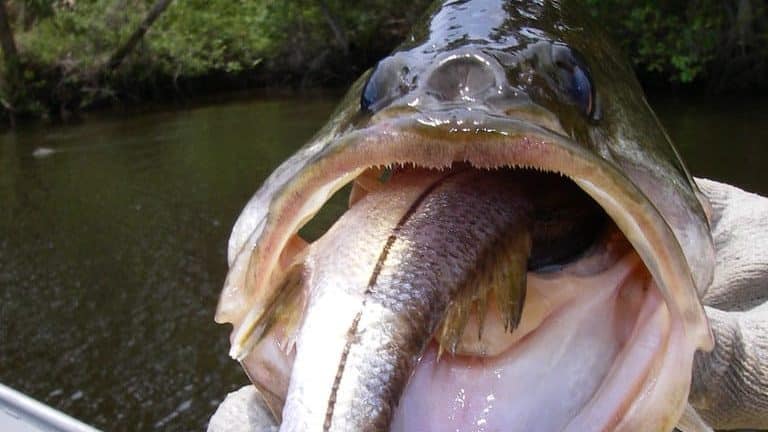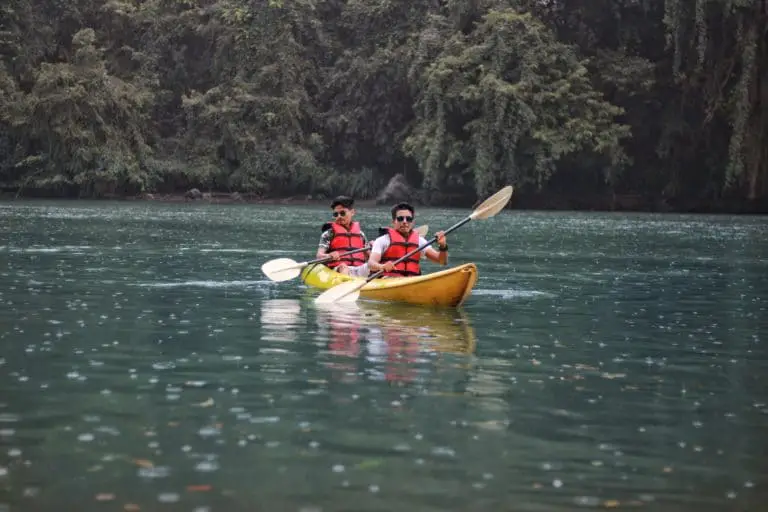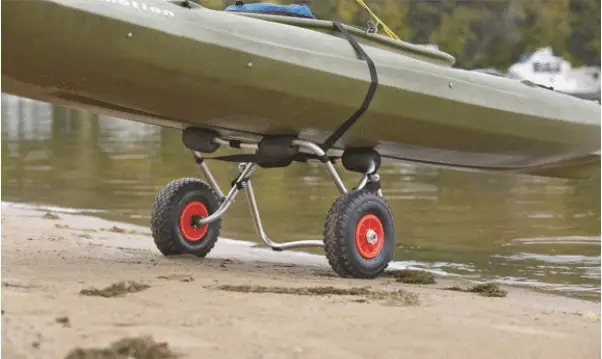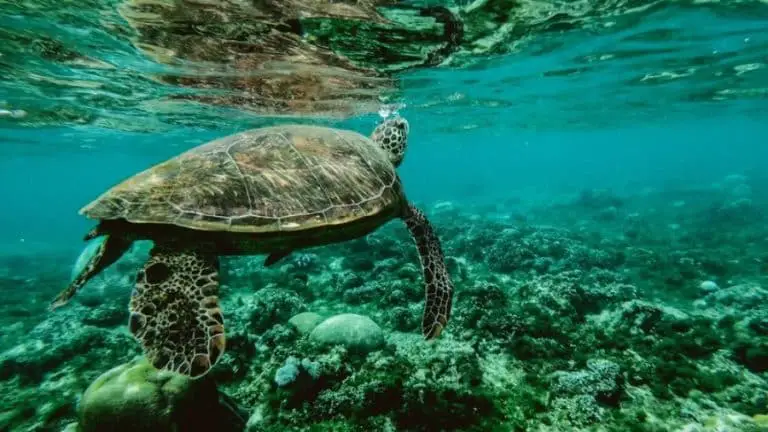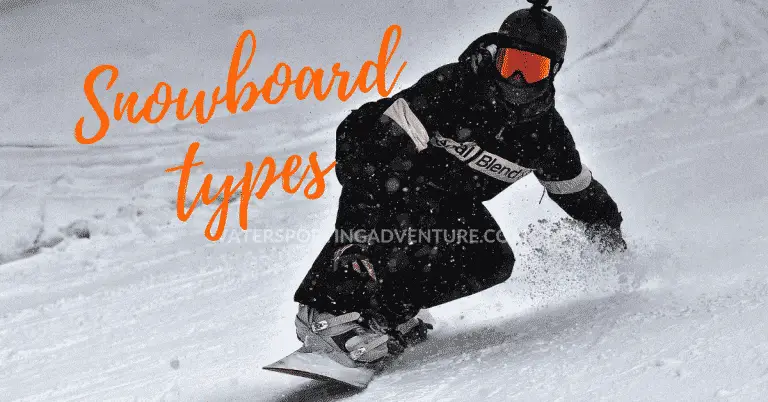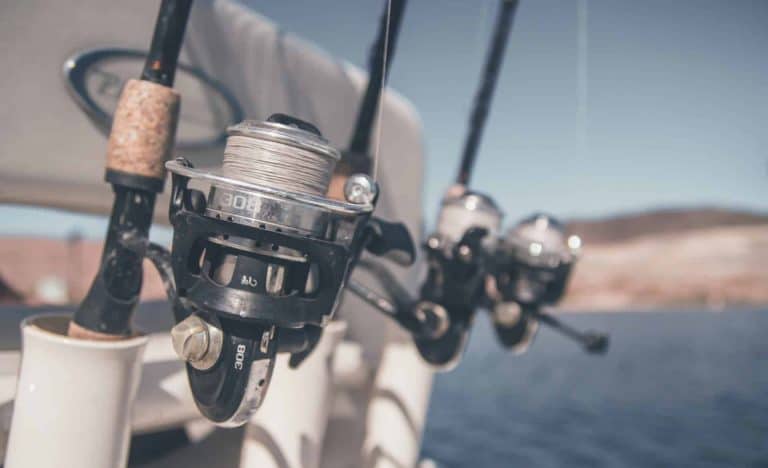Complete List Of Water Sports – 18 Activities To Try Today
Water sports are great hobbies that keep you fit, active and outdoors. They allow you to make the most of where you live, and there are options for people all over the world.
‘Water sports’ is, appropriately, an umbrella term that encompasses activities in, on, and next to the water, so there’s lots of variety and different options for everyone to try.
The other thing is that you don’t need to commit a lot of time and money to something if you’re not sure if you’ll like it!
There are plenty of courses and equipment for hire at water sports centers, so you can try things out and get some practice before you dive in.
Let’s look at some of the best (in our opinion) water sports, what they’re about, where you can do them, and what you’ll need to get started.
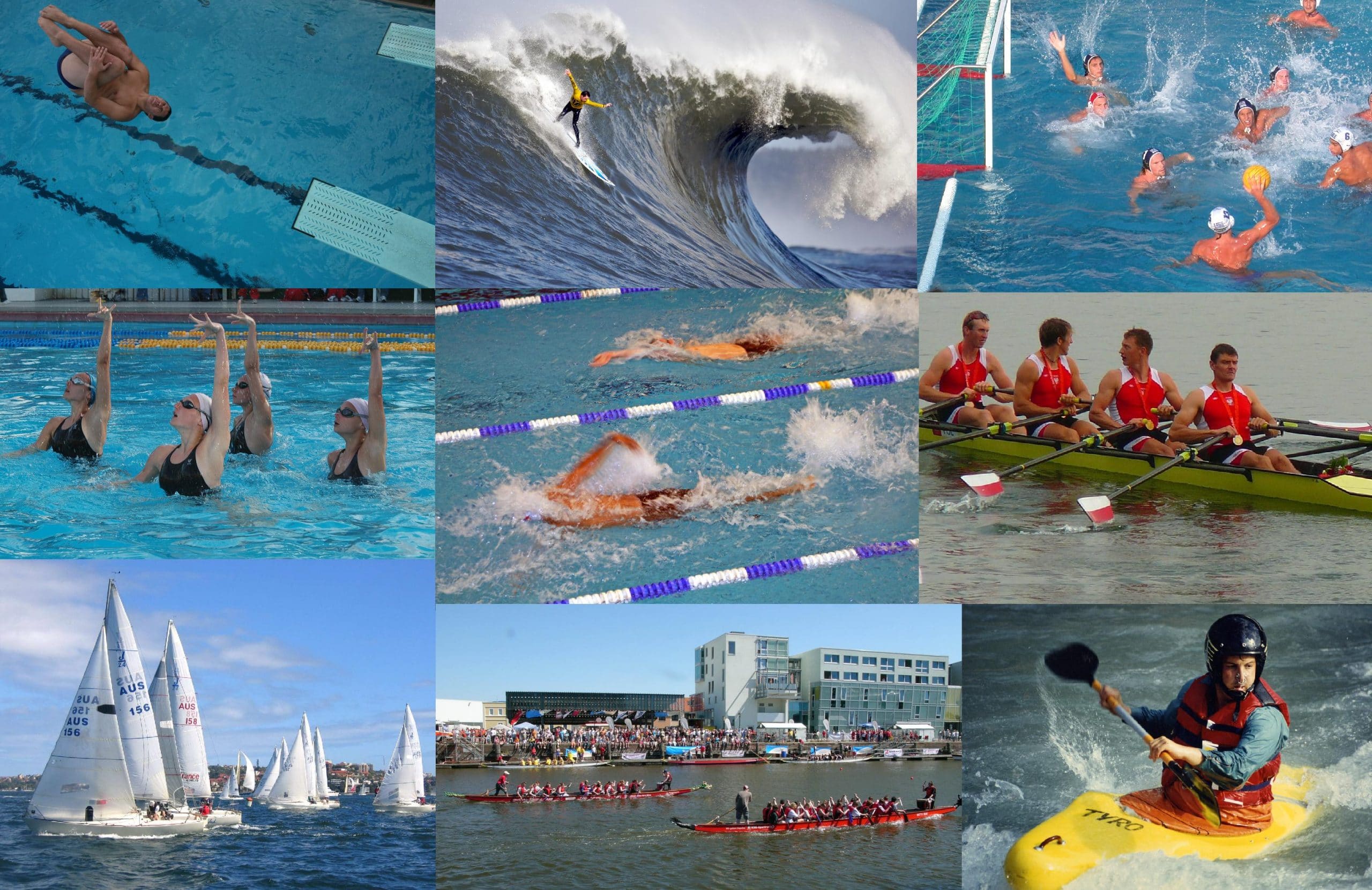
List of Water Sports – Top 18
Kayaking
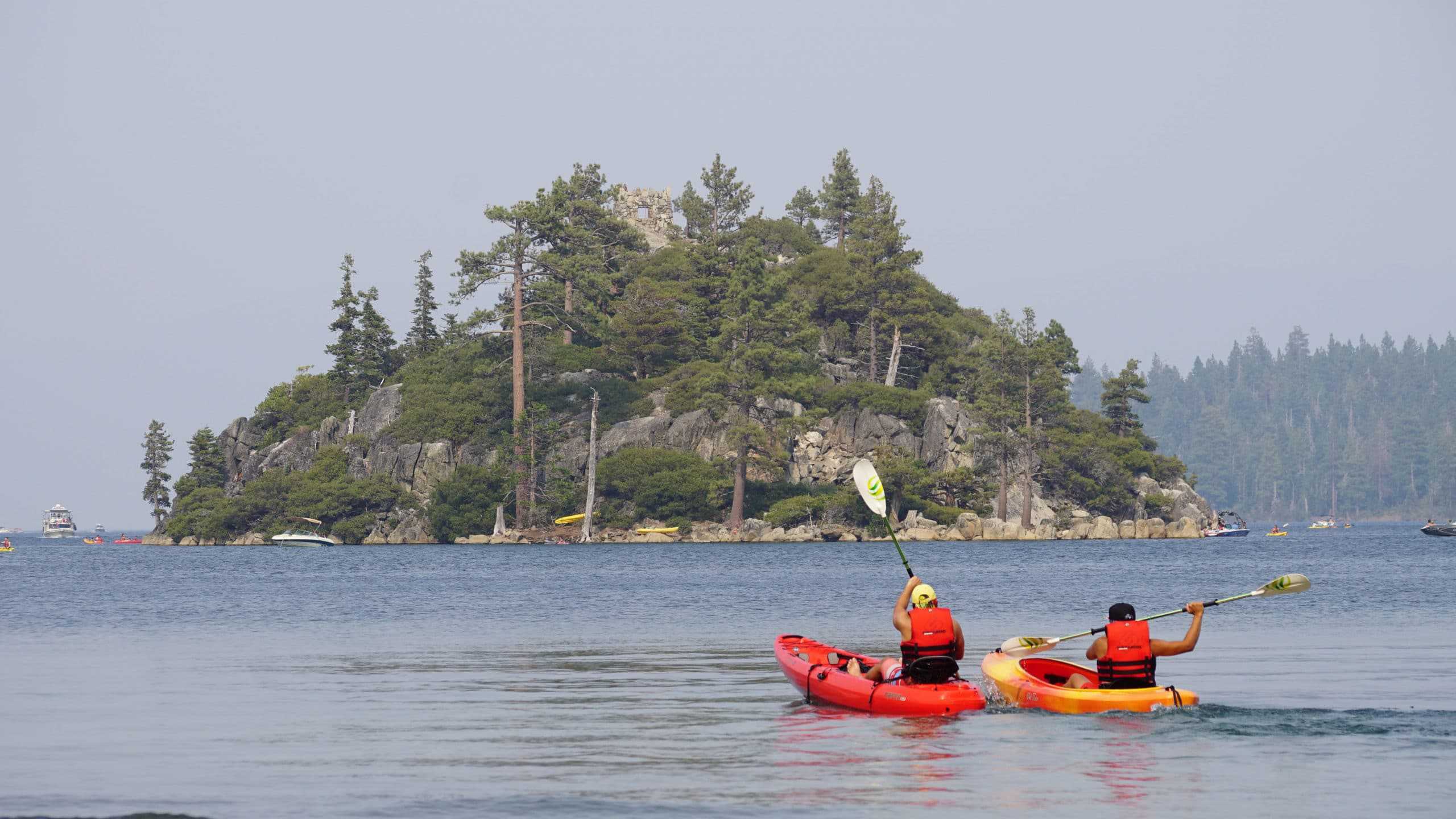
Like canoes, kayaks were originally made by Inuits and First Nation people, usually around what is now Canada.
Kayaks differ from canoes in their shapes: kayaks have cockpits that cover the paddler’s legs, which makes them more secure and you get splashed less.
You also paddle differently, in a kind of figure of eight shapes with a double-bladed paddle. It is possible to get a tandem kayak for two people, but it’s much more common for paddlers to have a boat to themselves.
This doesn’t mean that you can’t take a kayak out with friends – in fact, it’s a lot of fun and you can race, do tricks or go on longer trips for picnics or camping.
Both kayaking and canoeing are very quiet (unless you’re a noisy person) which means that you can see some really amazing wildlife. If you’re into wildlife photography, going out on a kayak or canoe can be a good way to get some great shots.
There are lots of different types of kayaks, and you can kayak in lots of different places.
If you’re fortunate enough to live by water you can explore this in a whole new way, but don’t feel limited: a weekend trip with a kayak can be a lot of fun, and you can take a kayak on lakes, rivers, and in the sea.
Top tips for beginners:
Don’t bring too much stuff with you, unless you’ve got a kayak that’s been designed for long trips.
A lot of people try to bring lots of kit with them, but there’s not a lot of storage space in a kayak and it often weighs you down and gets in the way.
Grab a bottle of water, put your
Fishing
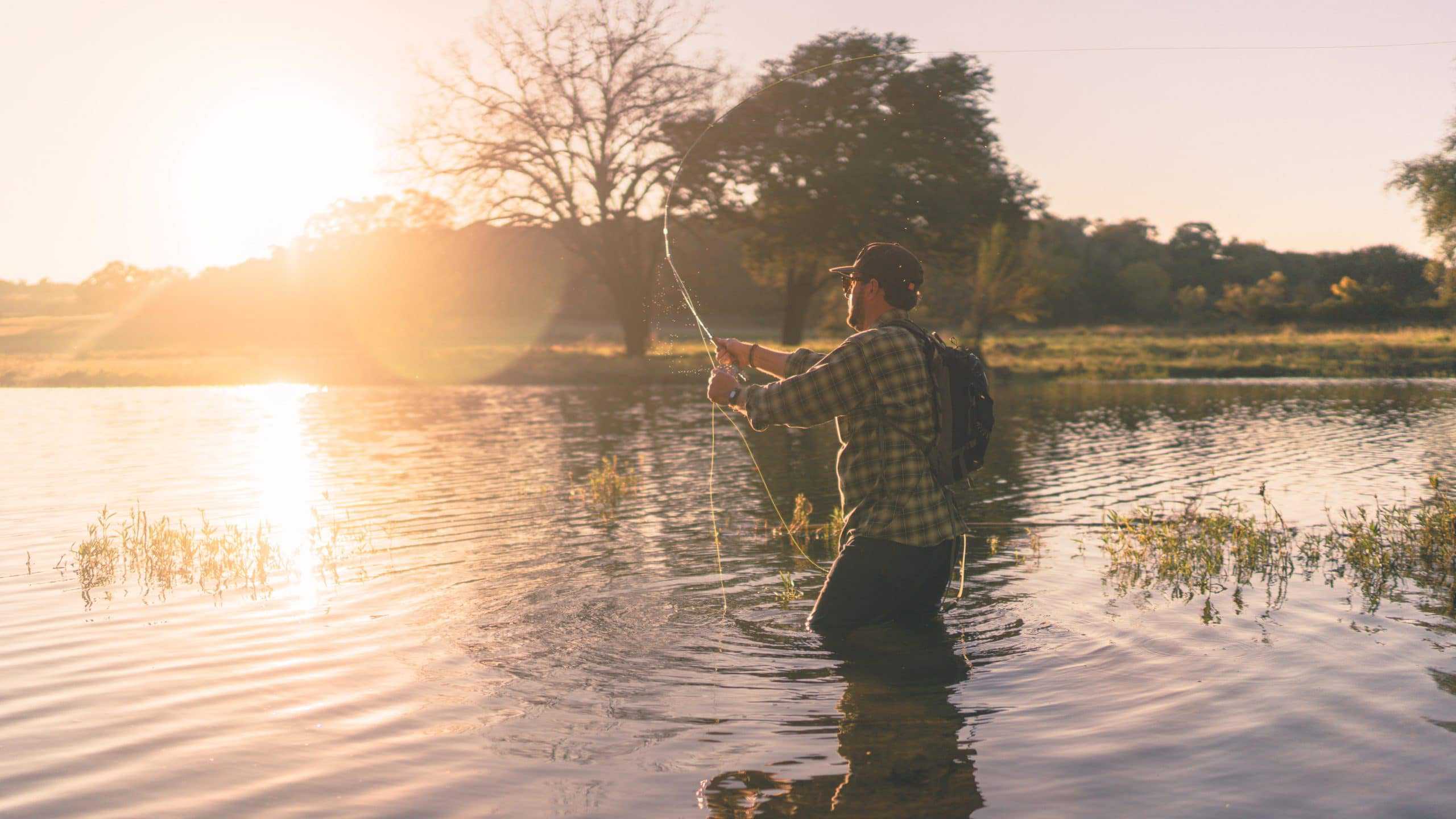
Most people know what fishing is – it’s pretty straightforward. But there’s a lot of variety in what you can catch, and how and where you do it. If you’re interested in fishing, look up what you can catch at the moment, where it is good to go, and if you can do it from the shoreline or if you’ll need a boat.
Fishing is a great way to peacefully spend time with people or take a moment to reflect by yourself. And bonus – in certain places, you can keep the fish you catch and eat them. You’ll never have a fresher meal!
Also, fishing can be as high-tech or low-tech as you like: if you’re into expensive hobbies you can get boats, special lines, fish finders, and even sat-navs to guide you to the right place; or you can just sit quietly with your rod and see what comes nibbling.
Top tip for beginners:
Check the best time to go fishing. You’re more likely to catch something at dawn or dusk – plus, there are options for early birds and night owls.
You can learn more about fishing in our fishing section.
Wakeboarding
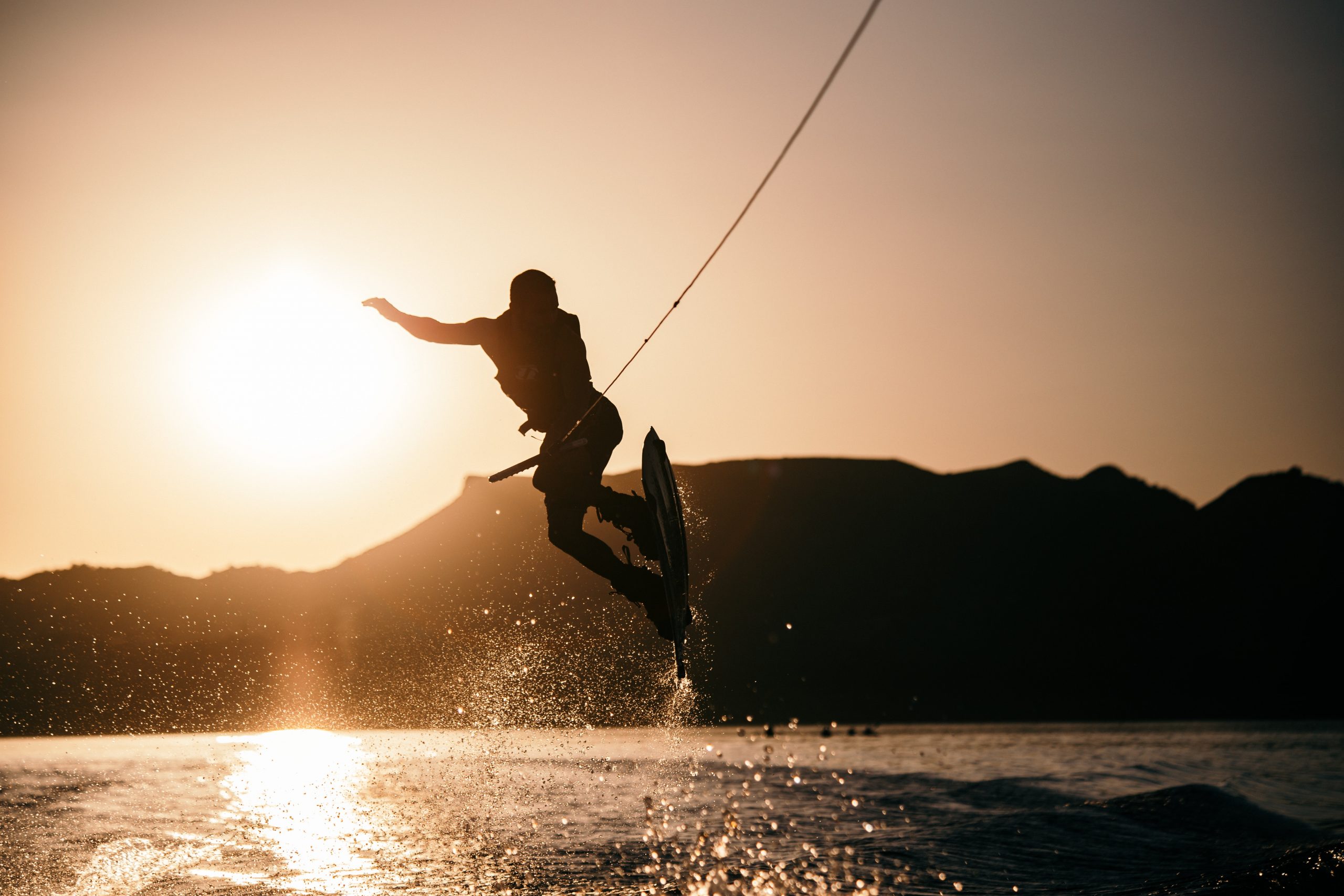
If you’re thinking about going wakeboarding, you’ll need three things: 1. Decent upper-body strength. 2. Good balance. 3. A lot of patience.
Most of the water sports we’ve talked about will involve some training, but wakeboarding takes a really long time to get right, not least because a lot of people find that actually getting started is the hardest part.
When you are there, though, it’s extremely exhilarating and enjoyable. Some wakeboarders love to do tricks, flips, and jumps, but don’t expect to be able to do this immediately- or, you know, you might do it accidentally.
Instead, hold tight and enjoy the ride!
Top tip for beginners:
If someone asks if you’re goofy footed, don’t start talking about Donald Duck. Imagine kicking a football. If you would use your left foot, you’re goofy footed and that’ll mean that when you wakeboard your left foot will be at the back.
Bonus tip: ‘goofy footed’ is also a term in snowboarding and skateboarding, and it means the same thing. You can learn more about wakeboarding in our boarding section.
Paddle Boarding
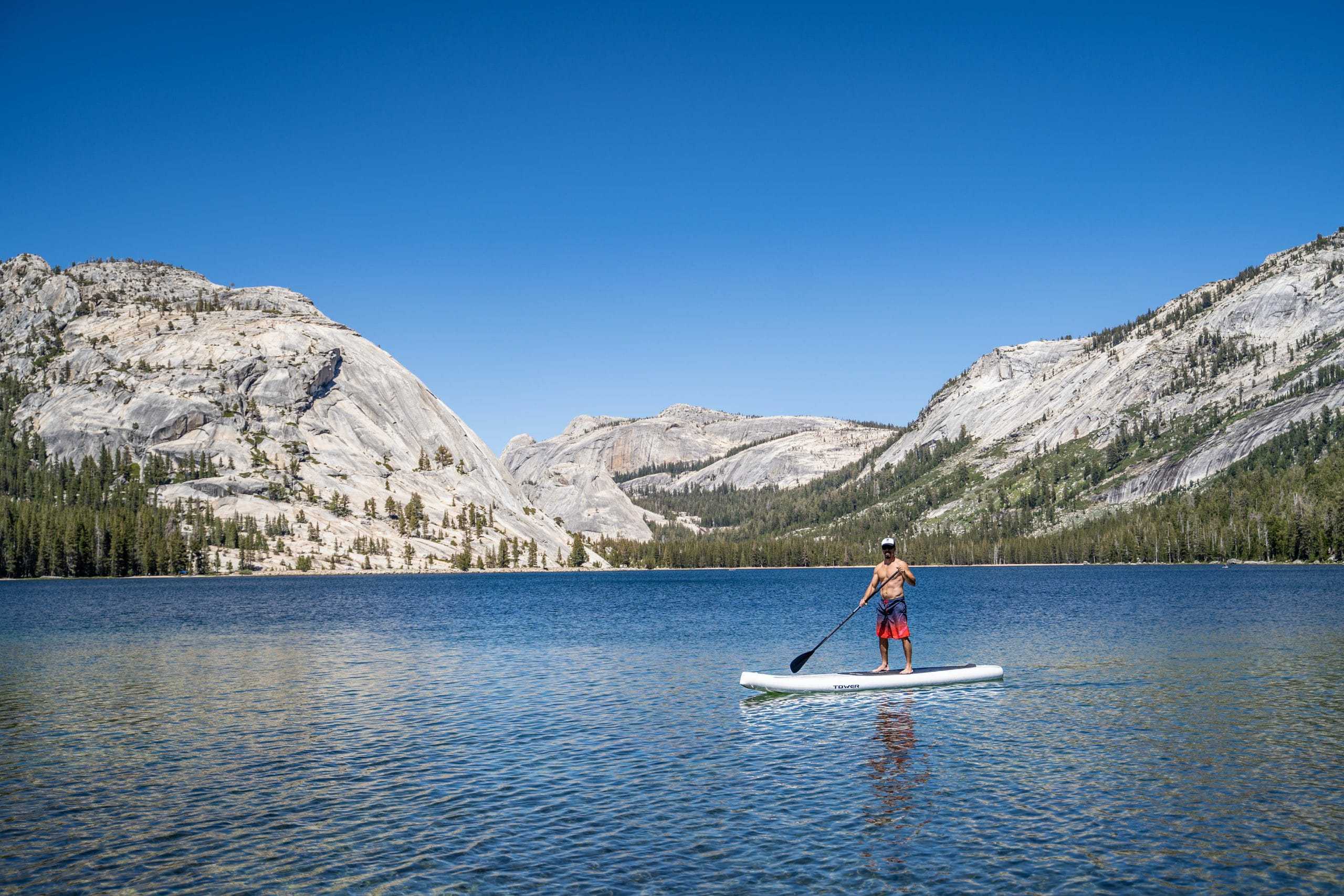
Paddleboarding is kind of like canoeing if you only had one paddler to a boat/board, and you stood or knelt instead of sitting.
You use a paddle similar to the one used for canoeing, and the board is very close to a surfboard. Although there are some skills used in paddleboarding that are great in surfing and canoeing, paddle boarding is its own discipline and will take some time to get used to.
Beginners often find paddleboarding tiring, but experts can often paddle all day – you’ll just need to be dedicated and build up your stamina. If you do end up paddle boarding regularly you will find groups, clubs, and even competitions that you could get involved with.
Just know that you’ll probably fall in the water once or twice!
Top tip for beginners:
Use a leash. No, not the thing you walk your dog with. A leash will attach the board to your arm or leg, so if/when you fall off it doesn’t get washed away.
The last thing you’ll want is to fall in, come (spluttering) to the surface and then see that your board has floated down the beach or lake. You can learn more about wakeboarding in our boarding section.
SCUBA Diving
SCUBA stands for Self Contained Underwater Breathing Apparatus and involves going underwater with a tank of oxygen strapped to your back.
Because you don’t have to hold your breath you can stay underwater for much longer than if you free dive, which gives you the opportunity to see much more.
If you like to SCUBA dive, there are lots of different places to do it around the world, and it’s the fastest growing extreme sport so you’ll have lots of different people to do it with.
A lot of people assume that the Great Barrier Reef is the best place to go SCUBA diving, but there are also great spots in Indonesia, Malaysia, the Red Sea, Belize, Hawaii, Philippines, Costa Rica, Scotland, Brazil, Easter Island, Argentina, Sudan, South Africa, and Madagascar.
As you might expect, there’s a lot to learn about before you dive and you’ll have to keep an eye on your equipment, depth, and dive buddy, but it’s so worth it and you’ll see some truly astonishing wildlife.
Top tip for beginners:
Before you dive for the first time, go swimming and do some yoga. The swimming is fairly obvious – you’ll need to be comfortable in the water – and yoga can help you monitor your breathing so when you’re using a mask and a gas tank it’s not so overwhelming.
You can learn more about SCUBA, in our diving section.
Snorkelling
Snorkelling is probably the safest and easiest way to see underwater, and because you don’t need to worry about oxygen all the time it’s the best if you want to relax.
So, what does snorkelling entail? You put a mask over your eyes and nose and breathe through a tube that connects to your mouth and sticks up out of the water.
This means that you can’t go in too deep, but it’s surprising and impressive how much you can still see, especially if the water is clean and clear. It’s a really nice way to calm down, watch some underwater wildlife and have a good time.
Snorkelling combines the low-tech aspect of freediving with the breathing of SCUBA diving and creates something fun and more accessible. You can go snorkelling with friends, but it’s not as essential as dive buddies are if you free dive or SCUBA dive.
Top tip for beginners:
Have something warm waiting for you on the beach. Snorkeling doesn’t usually involve a lot of movement, so you can get quite cold after a while.
Having a fluffy towel, hoodie or just a flask of coffee can be really nice when you come back to land. You can learn more about snorkeling, in our diving section.
Free Diving
You’ve got to be brave to free dive – there’s no ambiguity. You’ll also need proper training. But when you’re safe and prepared… Freediving is where you dive under the surface of the water for around a minute (depending on your level) without an oxygen tank and swim around.
Some people go free diving to get close to fish, and they’re often much friendlier because you don’t have noisy tanks with you. You can also do some underwater exploring and look at reefs, wrecks, and plant life close-up.
Freedivers love what they do, and often talk about the tranquility and harmony they experience when diving. This is because of your dive reflex, which is where your heart rate slows when you’re covered in water to conserve oxygen.
Top tip for beginners:
Get a pair of the best freediving fins. They’ll give you far more propulsion so you can swim deeper and see more. You can learn more about freediving, in our diving section.
Swimming
What a lot of people don’t know is how ridiculously good swimming is for your body and mind. Swimming uses every muscle in your body and can help you relax and unwind.
But more than that, swimming is great for your mental health, and 1.4 million people with depression and anxiety (in the UK) use swimming to reduce their symptoms and report requiring less help from mental health professionals when they swim.
It’s also really versatile: you can swim in lakes, rivers, the sea, or even swimming pools. Take some lessons and stay in your depth if you’re nervous, and you should ideally only swim in places with a lifeguard.
The other great thing about swimming is that it really opens up everything else you can do in or on the water: SCUBA diving, snorkeling, and even hiring boats is much better when you can swim, tread water and easily keep yourself afloat.
Any expert will tell you how important it is to really understand the basics, and being able to swim proficiently will open up lots of activities – or you can just do it because you love it.
Top tip for beginners:
Start swimming where you can still stand up if you need to. If you’re looking for a new swimming pool, see if you can find out how deep it gets – the information should be available online.
Synchronised Swimming
You’ll find that a lot of the watersports develop skills that are transferable and will allow you to do other watersports more easily.
If you’ve got good balancing skills from surfing, you’ll probably be able to windsurf with less training. And if you can swim, you can learn to do synchronized swimming.
When you can do synchronized swimming, you’ll have the flexibility for gymnastics and the breath control for diving.
Synchronized swimming is a team sport similar to underwater dance where swimmers move as a team and perform tricks to music.
It’s complicated, difficult, and requires a lot of training, but it’s also a great way to improve your fitness and your teamwork skills.
Top tip for beginners:
Make sure you’ve got a strong core. Yes, you should be a good swimmer and yes, you should be fit, but if you’re going to lift other swimmers you’ll need to be able to do that securely.
Water Polo
Water polo might be a misleading name. It’s actually closer to handball, played in the water and, ok, there aren’t any horses – although there were originally ‘mock’ horses made of wooden barrels that players had to sit on. It’s also a full-body workout, very competitive and you’ll have to work with a team to get a ball in a net.
Teams will develop complicated strategies to score and win, and really good teams can go on to play in the Olympics. If you’re interested in playing, you’ll need to be very fit and have decent stamina.
Top tip for beginners:
Practice swimming. It sounds obvious, but the pools you play water polo in are massive and have to be at least 2m deep.
If you’ve just started swimming, have water polo as something you’re working towards, not something you can do instantly.
Rowing
Rowing comes in lots of different shapes and forms. Firstly, you have small, wide boats that are usually only rowed by one person. This tends to be casual and you won’t go fast, but it’s a nice way to spend a sunny afternoon.
There’s also competitive rowing, which can be done in teams, pairs, or solo. Competitive rowers usually use long, thin boats so they can go faster, and although there’s some overlap in the skills used with a causal boat, they’re quite different disciplines.
Top tip for beginners:
Make sure you get your technique right. Rowing casually or competitively is a lot of fun, but if you’re not doing it properly you can really hurt your back. This also applies if you’re using a rowing machine.
Canoeing
Originally developed by Native Americans and First Nation people in North and South America, canoeing is a simple (but extremely effective) way of getting around on a boat.
You can make it high-tech, and that’s great, but it can also be straightforward, peaceful, and still be just as much fun.
Canoes are usually shared between two or more people, which means you can bring a friend, family member, significant other, or just your dogs and have a great time and bond.
Being able to canoe is also useful if you like to go fishing because you can both get to different spots on the shore that would usually be out of reach or you can fish off the side of the boat.
You can take canoes out on rivers, lakes, and the sea but they do tend to be used on calmer waters. If you’re looking for something with a bit more of a thrill, try kayaking.
Top tip for beginners:
The first time you canoe, take a more experienced person with you. They can sit at the back of the canoe and steer as well as a paddle, and they’ll be able to tell you if you’re making any mistakes so they don’t become habits.
Sailing
If you love going out on boats but like to go faster, sailing might be the right choice for you.
Like other water sports, you should be able to hire equipment and get lessons from a water sports center, but unlike kayaking and canoeing you can’t just figure it out – you’ll need specific, hands-on experience before you take a boat out.
We should be clear, too, that just because you’re not using oars or paddles doesn’t mean that you won’t have to work, pay attention and do some physical labor.
Having said all that – sailing is just a lot of fun. You can speed along much more so it can be quite thrilling, and getting properly out on open water is wonderful.
There are lots of different types of boats to sail, and you can find one that’s right for your ability. It’s also possible to sail by yourself or with other people (and dogs) so this can be as sociable as you like.
Top tips for beginners:
Watch out for the boon! That’s the bar that goes underneath the mainsail, and it can swing across the boat when the wind changes or you adjust the direction of the boat.
Wind Surfing
We’re going to be honest with you here: you’re going to get wet. You’ll fall in the water a lot, especially if you’re a beginner, and especially if you don’t have the best balance.
And then there’s the spray! But it’s really, really worth it. Windsurfing is a kind of combination of sailing and surfing, and you move through the water propelled by the wind instead of waves.
To do this, you stand on something that looks a lot like a surfboard but has a large sail that you hold and move with your body. There are different disciplines and windsurfers (sometimes called ‘sailors’) who can learn to go fast, turn well or windsurf in different types of water.
Finally, there are lots of great spots to windsurf and it can be done anywhere in the world, but Wales, Greece, Egypt, Fuerteventura, Hawaii, and South Africa are particularly popular.
Top tips for beginners:
Learn your stances! You’ll need to be able to shift your weight quickly when you’re out on the board, and it’s a good idea to practice how to stand and shift when you’re still on land.
You’ll definitely still fall in the water more than once, but this will reduce the number of times you eat surf.
Kite Surfing
Kitesurfing and windsurfing are nothing alike, even if they do both involve boards, the sea, and wind.
When you kitesurf you stand on a small board, a little bit like a snowboard, and get propelled forward when the wind blows into a big kite that’s attached to your waist and controlled by your arms.
It’s completely exhilarating and a lot of fun, and it’s less expensive and more convenient than sailing and sailing-adjacent sports.
You’ll need proper training to keep you safe and help you kite surf correctly, but this is often a great way to meet other people who love to kitesurf too.
Top tip for beginners:
Get a kite to fly on land. You don’t need to be in Mary Poppins to know that it’s a lot of fun to fly a kite, and doing this when you can’t go kite surfing is a great way to practice and learn how to handle a kite in different winds.
Surfing
Just because you like surfing doesn’t mean that you have to live on a beach in California with sun-bleached hair, bad tattoos, and Ugg boots.
Or that you have to say ‘tubular’ a lot. I mean, unless you want to. A lot of people associate surfing with a specific group of people and think that you can only do it in certain parts of the world, but that really isn’t the case.
You can surf in the UK, Australia, Bali, Sri Lanka, Portugal, Costa Rica, Mexico, and many more.
If you’re on holiday in one of these places, having a surfing lesson can be a great way to get out onto the ocean, learn more about the place and have a great time.
If you’re lucky enough to live somewhere with decent surf, you might be able to go more regularly. It’s a great way to meet friends, have fun and get some exercise and improve your balance. Sounds pretty tubular, really!
Top tip for beginners:
Get a big surfboard. Some beginners try to surf with little boards, but they’re more difficult to balance on and you may well miss out on some good waves. So, the bigger the better for beginners!
Body Boarding
A lot of people went bodyboarding as children, had a good time, and then grew out of it. It’s fun, but it’s not, well, the kind of thing adults do.
Well, aside from anyone competing in the World Championships, or anyone who’s ranked in the International Bodyboarding Association World Tour.
Really, there’s no need to stop bodyboarding when you grow up, and it can be taken quite seriously. There are different styles of riding and what you’re best at will depend on your height, weight and strength.
For those who didn’t bodyboard when they were children, bodyboarding involves finding a wave and surfing across it but whilst still lying on the board.
This will push you into the shore, so bodyboarders will usually wear fins of some kind so they can swim back out easily.
Top tip for beginners:
Learn how to read a wave. Some waves aren’t right for bodyboarding, so assessing them is crucial.
Jet Skiing
Ok, so most people wouldn’t technically count this as a sport. But it’s on water, and it’s a lot of fun, so we’re including it anyway. Like a lot of the other activities, you can do this competitively or you can just hire a jet ski and zoom around on it.
It’s also possible to learn various tricks like jumps and flips. You can jet ski alone or you can have one or two people sitting behind you, like a motorbike.
There are two other things you should really know: firstly, you’ll need to go to a safety briefing before riding a jet ski. They’re not dangerous if you know how to use them, and you will need a proper explanation of what to do.
Secondly, you will get wet. If you’re going jet skiing in the winter or the water is cold, a wetsuit can be really useful.
Top tip for beginners:
Don’t stand up on your jet ski. It’s fine when you’re experienced, but standing up can make it difficult to balance and harder to control the jet ski.
List of water sports conclusion
Our planet is mostly covered in water, so you may as well make use of it. People have been playing in rivers, lakes, and the sea for as long as there have been people, and now there are so many different options to keep you busy and enjoying yourself.
Don’t feel like you have to limit yourself to just one of these, either: a lot of paddling activities go well together, and if you have friends who like to snorkel or free dive you can join them or go SCUBA diving instead.
You have loads of choices, and we hope that you’ll find the perfect one for you.
Latest Posts:
- How To Adjust A Baitcaster
- Magnetic Vs Centrifugal Brake Baitcaster
- Baitcaster Brake Vs Spool Tension
- How Much Does Ice Fishing Cost?
- What To Bring Ice Fishing
- Do Underwater Lights Work For Ice Fishing?
- Does Gulp Work For Ice Fishing?
- How To Dress For Ice Fishing
- Using Glow Sticks For Ice Fishing
- Homemade Ice Fishing Tip-up

